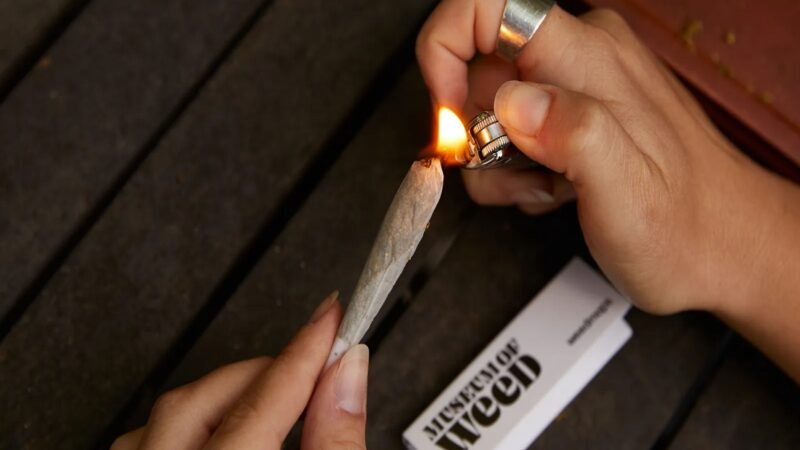How Long Does it Take to Tan?

There are risks to tanning and being in the sun for a long time, but some people still do it because they like the way it makes their skin look or because it’s a hobby they enjoy.
If you decide to spend time tanning in the sun, you can reduce some of the risks by learning how to tan quickly. Read on to find out how long it takes to get a tan and what you can do to make it safer.
Table of Contents
Your tanning time depends on these 5 factors
Now that summer is here, you want to get a tan quickly. You’re spending more time outside, so it’s easy to think that’s why you’re getting a tan faster or why you’re getting painful sunburns. But there is a lot more going on here than just being outside. How long it takes to get a tan depends mainly on:
- Sunlight level also called UV index
- Your altitude
- No matter if you are by water or snow,
- Your skin type
- And, of course, how long you’re out in the sun.
Whether you’re near water or snow or not, altitude is very important. Or even your garden pond.
What do UV Index and tanning have in common?
The Ultraviolet Index, or UVI, shows how likely it is that you will get a sunburn from UV radiation and how bright the sun is. A scale from 0 to 11+ is used to describe it. The sunburn map is a great way to find out the current UV index in your exact location.
It’s important to note that the amount of atmosphere ultraviolet light has to go through makes it weaker. Because of this, the strength of UV rays goes up with altitude and is strongest at noon in the summer in the tropical zone. From fall to spring, in the mornings and afternoons, and farther from the equator, it is much lower. Also, ground reflection makes the radiation exposure much worse. If you plan to be in or on water, snow, or any other reflective ground, take extra precautions.
Read more: How To Calculate Percent Loss of Weight?
Tan in the right time of the day
If you want to avoid getting a lobster tan, you must tan early in the morning or late in the afternoon. Pale people should pay special attention to this.
This is because the sun is at its strongest between 11 a.m. and 3 p.m., so you shouldn’t be out in it during those times.
How long does it take to tan safely in the sun?
If the sun is out and you are going to be in it, it can take anywhere from 15 minutes to an hour, on average, depending on the color of your skin.
If you want to make the most of the sun’s effects on your skin and want to know how long it takes to get a tan outside, try using a good darkening lotion and bronzing cream.
A good tip is to use the darkening lotion for the first 40 minutes and then start putting on your sunscreen with UVA protection and a broad spectrum SPF of 50 or higher after that.
Read more: How Long are Concerts?
How Long Does it Take to Get a Noticeable Tan?
On a sunny, hot day, getting a tan can take anywhere from 15 minutes to an hour. Depending on the color of your skin, it could take up to two hours.
In 2008, a study showed that the type of skin and whether you tan outside or inside were also predictors of tanning dependence [1].
But because of the risk of skin diseases and even skin cancer, it is important not to spend too much time in the sun [2]. So don’t spend more than a couple of hours tanning.
Can I get a tan in the shade?
Yes, you can get a tan in the shade. The sun’s rays bounce off things in the environment and hit people’s skin. Even if you’re sitting in the shade, the sun’s rays can get to your skin through things like bright snow or pale beach sand.
For example, experts from the Queensland University of Technology said that sand can reflect up to 25% of UV radiation. Because of this, the experts at skincancer.org have said that shade isn’t always the best way to protect yourself from the harmful effects of the sun’s UV (ultraviolet) rays. They also say that people can stay in the shade for a long time and still get a lot of suns, which can cause skin damage.
How Long Does it Take for a Dark Tan to Show?
How dark you want your tan to be and how light your skin is will determine how long it takes for your skin to darken on its own. Don’t forget what I said about one to two hours. Most people will have a base tan at this point. It usually takes 24 hours to get a deeper tan. Once you have a base tan, you can stay in the sun for one to two hours every day until you get the results you want.
Even on cloudy days, you should always put on sunscreen before going outside to tan. A study done in 2014 [3] confirmed that getting too much sun or infrared radiation speeds up the development of cancer.
How long does it take to tan outside?
If you don’t wear SPF sunscreen, you could get a sunburn or tan in as little as 10 minutes (sun protection factor). Most people will get a tan in a couple of hours. Sometimes a tan doesn’t show up right away. When the skin is exposed to the sun, it makes melanin, which can take a while. This changes the color of the skin over time.
How long it takes to get a tan outside will depend on the type of skin you have and the weather. Consider two people sitting on a beach: one with light skin and one with dark skin. The person with lighter skin may burn, while the person with darker skin may get a tan (which still damages the skin). The American Academy of Dermatology says that a person’s skin color is a big factor in whether they will burn or tan.
Does SPF impact your tanning time?
Great question. Scientists just found out that tanning every other day makes your skin tan faster[ii]. The theory behind this shocking result is that your skin can only protect you in so many ways. They can use them to get a tan or to heal a sunburn. Yes, SPF could slow down the time it takes for you to tan, but it’s much more likely to help you tan better and faster by letting your skin put all of its energy into melanogenesis, which is what gives your skin its color.
How to prepare for your tanning bed session?
Get rid of dead skin so you can use the tanning bed faster and safer. Dead skin cells are harder to get down. For this, you could use a body scrubber to get rid of dead skin. If you want to get the most out of exfoliating your skin, the best time is usually the night before you go tanning.
For even better results, make sure to get rid of all of your skin hair and put the creams and lotions on your whole body.
How Long Does it Take to Get a Spray Tan?
The spray tan will start to work as soon as it is put on your skin, while traditional methods can take up to 8 hours to take effect. When this time is up, you’ll feel the full effect. You can also use express sprays, which take 3 to 4 hours to dry on your skin and show the full results.
Other tanning risks
There are risks to getting a tan, especially if you don’t use sunscreen. UV rays can still hurt you, even if you wear SPF. There are risks to tanning, such as:
- Melanoma and other cancers of the skin
- dehydration
- sunburn
- a heat rash
- premature skin aging
- eye damage
- immune system suppression
How Long Does It Take To Tan with self-tanners?
The skin can get hurt by traditional self-tanners. They can make you age faster and cause other skin problems as well. How long it takes to get a tan really depends on the product you use, and the instructions will tell you how long it will take. For best results, you should leave it on your skin for about 6–10 hours on average.
But hold on a second! Instead of traditional self-tanners, I’d like to suggest that you…
How Long Does it Take to Get Rid of a Tan or Fade Away?
Tans aren’t permanent. No matter what method you use to get a tan. Tans can last anywhere from a couple of days to a few weeks. Depending on how dark you want your tan to be, a spray tan can last up to 10 days.
To make your tan last longer, you should exfoliate your skin and stay away from drinks that dry out your skin, like alcohol. Someone timed how long it would take for their tan to go away.
Pros and cons of self-tanning lotion
Like most beauty products, self-tanning lotions have pros and cons. I think it’s important to look at the whole picture before deciding whether or not to use them.
What is the best alternative for self-tanners?
If you need a tan right away and can’t wait for the next sunny day, wash-off bronzers are the best alternative to traditional self-tanners. They are body bronzers and tinted body luminizers that give you a beautiful, glowing tan right away that lasts until you wash your skin again.
In other words, they give you an instant tan that will go away when you take your next shower. They are also much safer, work better, and smell better than tanning beds. The brands of these instant self-tanners vary in how long they last and how well they work, so make sure to choose the Best wash-off bronzers on the market for the best possible result.
Does SPF impact your tanning time?
Great question. Scientists just found out that tanning every other day makes your skin tan faster[ii]. The theory behind this shocking result is that your skin can only protect you in so many ways. They can use them to get a tan or to heal a sunburn. Yes, SPF could slow down the time it takes for you to tan, but it’s much more likely to help you tan better and faster by letting your skin put all of its energy into melanogenesis, which is what gives your skin its color.
Conclusion
OK, you know a lot of things. It’s great that you are going out of your way to learn more and get the most out of your tanning time. Tans are not the same as getting too much sun, so you are doing the right thing by making sure you are doing it safely.
We also need to remember that getting a tan depends on many things, like the products you use, so make sure to choose the best sunscreen for your skin type.
As you already know, you should never go out in the sun without SPF protection, and I can’t stress enough that you should always use the best SPF over 50, even when it’s cloudy or winter. If you have sunburn, you can just put lotion on it. I’ve also found that ice cubes wrapped in a thin piece of cloth help ease the pain.
Now that you know how long it takes to get a noticeable tan and how to get a perfect, long-lasting tan, you are ready to go out and enjoy the sun the right way.
Frequently Asked Question (FAQs) about How Long Does it Take to Tan
Are there any tanning risks?
Some of the risks of tanning are damage to the eyes, sunburns, a weakened immune system, heat rashes, early aging of the skin, and skin cancers, such as melanoma.
Is it healthy to tan in the sun?
You can’t get a healthy tan. A dermatologist at Harvard’s Massachusetts General Hospital, Dr. Barbara Gilchrest, says that “a tan is a response to DNA damage.”
This kind of damage speeds up both skin cancer and the aging of the skin.
How to make your tan last longer?
To make your tan last longer, use a self-tanner and exfoliate your skin before you go outside. You should also avoid bathing and swimming in hot water, use self-tanners, avoid salicylic acid, and keep your skin moist.
Does your skin stop tanning at some point?
Yes, your skin stops getting tan at some point. Melanin is what makes you tan, and it has a time limit that is usually between 2 and 3 hours.
A couple of hours in the sun can be bad for your skin.
Can I get a tan even if I’m in the shade?
Even in the shade, you can get a tan. Even if you are in the shade, UV (ultraviolet) radiation can still reach you. UVB rays, which can be harmful, will affect your skin indirectly.





